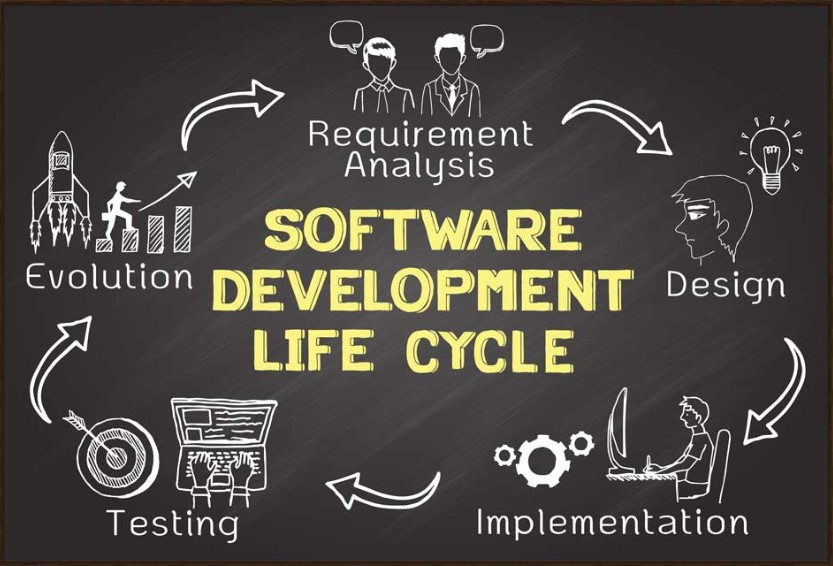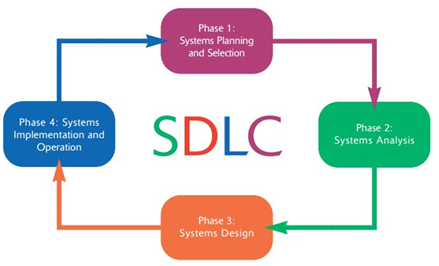

Posted On : 29 May 2020
Many complex machines and devices are being made nowadays aimed at making our lives easier. From the most complex driverless cars to the simple wearable fitness tracker, all these contain software that is essential for their functioning. Software is also used daily by all of us in various ways. The smartphone that we cannot let go from our hands has much software installed in them. Though most of the people who use the software may not think much about them, there are a lot of planning and deliberations that go into the making of each software.
The basic requirements for any software are that they should be flexible, easy to maintain, and upgrade. This will require proper planning of how each step should be taken. This is where the concept of the Software Development Life Cycle (SDLC) becomes very important. Planning the various phases and models of SDLC is what can take it to the goal that is aimed at.

It is essential to understand SDLC if you must know what goes into the creation of every software. It represents the various steps towards the construction of the software and its maintenance. SDLC starts with the decision to build software and ends only when it is removed after use. SDLC is essential to ensure that the software will meet the requirements of the users. SDLC helps the client to see the development process beforehand and it helps the software developers see the end and how they are going to achieve it.
The main advantage of SDLC is that everyone can see what is going on. These steps help the developers to control the process properly. It also eliminates the danger of going over the budget or not being able to do the work within the deadline. These steps also help to predict the delivery at each stage. SDLC ensures that the process continues until the needs are met. There are clear phases through which the software development services in Singapore will take the project through.

Defining the phases helps all the stakeholders to know what they must achieve at the end of each of these phases and also to check whether they have achieved the result. The following are the different steps the SDLC passes through.
IDEATION – This is the stage where the clients and the developers brainstorm on the problems faced by the clients and how they can be solved by the software. This is where the decision to build the software is taken.
UNDERSTANDING REQUIREMENTS – In this stage, all the requirements of different parties are discussed. The client and the developing team discuss the requirement of resources for the completion of the project. These include the budget, manpower, and other requirements and the deadline for the project. At this stage of the SDLC in custom software development, all the requirements will be put down in the document called Software Requirement Specifications.
DESIGNING THE SOFTWARE – It is at this stage of the SDLC that the actual design of the software is planned. All the requirements must be transferred to the design. There are two levels to the design – the high-level design (HLD) and the low-level design (LLD) both of which are connected.
The HLD is an overall plan of the various systems and the elements in them. This document will show the connection between the elements and the system. This design level will also talk about resources and technologies. The risks in the project will also be mentioned here.
The LLD will discuss each system in detail and how it will be achieved. The layout and the connection of the equipment will be also detailed here. The specifications of the individual components of the system will be mentioned in this stage.
DEVELOPING THE SOFTWARE– This is where the software development company in Singapore develop the software. The experts start to code the various modules. The coding will be divided between different teams that are specialized in each task. The user interface and the communication with the server will be designed by the front-end developers. The data administrators will add the necessary data to the software. At the end of this phase, the workable software and the source code document will be ready.
SOFTWARE TESTING – At this stage, the QA team will start testing the software for various parameters. They must ensure that the software performs as per the needs of the customers. The testing process will be completed only after all the bugs are removed and the software meets the requirements.
DEPLOYMENT – This is the final stage when the software is handed over to the client. A beta version is first sent to the market to be tested by experts and get feedback from the first users. Once everything is satisfactory, the final version of the software is deployed. Upgrades continue to happen in the maintenance phase.
There are different models that are being used in SDLC and this allows the custom software development team to plan the process and predict the outcome. Different models are used by different teams. Each one has a different approach to the process but has the same phases. The main two models are the Agile Model and the Waterfall model
UNDERSTANDING THE AGILE MODEL – The agile model is helpful when the requirements are not clear. This model helps to make changes at any stage of the development process. The cycles are short and allow for review at every stage. The clients can see the results and give their feedback to the developing team. Once they get the feedback the team will make the change and present it to the clients for further feedback.
In this model of development, there are possibilities to make changes at every stage. There is continuous testing at every cycle which allows for corrections. The main advantage of the Agile model is that it allows the clients to be involved at all stages and see the development of the product.
WHAT IS THE WATERFALL MODEL? – The Waterfall model is more rigid than the Agile model. This is good for projects where the final requirement is very clear and there will be no change in it. This model doesn’t allow for any involvement of the client at the developing stage. This allows for the custom software development cost to remain constant. Each phase must be completed successfully before moving to the next phase.

This process is good for processes where the market requirements are not likely to change and the client needs to see only the end product. The possibility of change is there only once the product is completed and delivered.
Whatever be the model used, the SDLC will continue until the product has been completely used and removed from use. Updates and support will be given continuously by the developing team until the product is in use. Software development is a serious responsibility for the developers and they must plan this very well.
Do you want your business to touch new heights? If you do, we can certainly help your business with the perfect blend of SEO and custom software solutions. In fact, we helped many businesses in achieving massive success over the years with our solutions.
Drop Us A Line To Know How BThrust Can Turn Your Goals Into Reality. Contact Us For SEO, Custom Software Or Other IT Services We Offer!